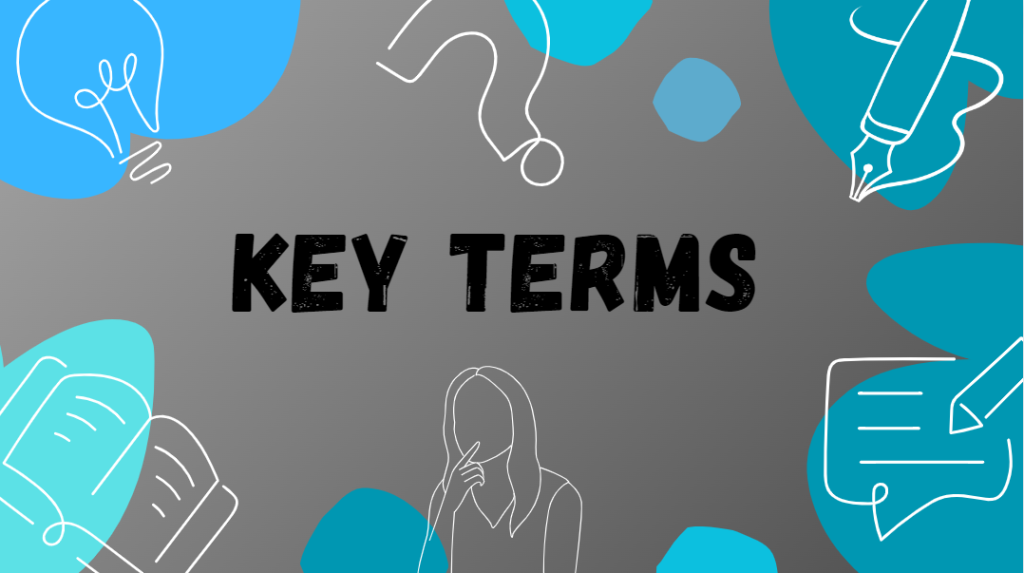Key Terms
Accommodating: Style of conflict management shows low importance of your goals and high importance regarding your relationship. This is often viewed as passive or submissive, since someone complies with or obliges another without providing personal input.
Action-Oriented Listeners: Those that prefer well-organized, precise, and accurate information.
Amygdala Hijacking: This is when you can no longer access the prefrontal cortex, the part of the brain that regulates empathy, decision making, problem solving, and much more.
Amygdala: This part of the brain regulates emotions and behaviors, and is typically talked about as the location where the “Fight, Flight, or Freeze” response lives.
Autonomy: This is our sense of control over events that impact our future.
Avoiding: This style of conflict management involves low importance of personal goals and your relationships. No direct communication about the conflict takes place.
Certainty: This is our sense of clarity to predict future outcomes.
Collaborating: This style of conflict management that shows high importance of your goal and your relationship and usually indicates investment in the conflict and/or relationship.
Competing: This style of conflict management shows high importance for your goals and low importance for your relationship, in which one party attempts to win by gaining concessions or consent from another.
Compromising: This style of conflict management shows moderate importance of your goals and your relationship and may indicate there is a low investment in the conflict and/or the relationship.
Conflict: Interactions in which there are real or perceived incompatible goals, limited resources, or opposing viewpoints.
Content-Oriented Listeners: These listeners are analytic and enjoy processing complex messages.
Critical Listening: This involves listening with the goal of analyzing or evaluating a message based upon the information presented verbally and any information that can be inferred from the context of the situation.
Discriminative Listening: This is a focused and usually instrumental type of listening that is primarily physiological and occurs mostly at the receiving stage of the listening process.
Empathetic Listening: This occurs when we try to understand or experience what a speaker is thinking or feeling.
False Consensus Error: This is the tendency to overestimate how similar we are to other people.
Framing: This is the act of intentionally setting the stage for a particular conversation.
Fundamental Attribution Error: This refers to our tendency to explain others’ behaviors using internal rather than external attributions.
Halo Effect: This is when initial positive perceptions lead us to view future interactions as positive.
Horn effect: This is when initial negative perceptions lead us to view future interactions as negative.
Inattentional Blindness: This is the failure to notice a fully visible, but unexpected, object or event when attention is devoted to something else.
Inattentional Deafness: This is when people fail to notice an unexpected sound or voice when attention is devoted to another aspect of a situation.
Informational Listening: This involves listening with the goal of comprehending and retaining information.
Internal Attributions: This involves connecting the cause of behaviors to personal aspects, such as personality traits.
Limbic System: This system scans the environment for threats or rewards.
Listenable Messages: This involves messages that are specifically tailored to be comprehended by the listener.
Nonverbal Communication: This is the process of conveying a message without the use of words.
People-Oriented Listeners: This type of listener is concerned about the needs and feelings of others, which may cause distraction from a specific task or the content of a message in order to address feelings.
Process Goals: This is the ability to have events and processes unfold in a certain way. This includes decision making and how communication happens.
Reframing: This occurs when a conversation get off track and you need to bring the conversation back on to the initial topic.
Relatedness: This is our sense of connection with others in our groups.
Relationship Goals: This is our ability to relate to the people.
Schemata: This is sets of information based upon cognitive and experiential knowledge, which guides our interaction.
Selective Distortion: This is the tendency to adapt information that conflicts with our earlier impressions in order to make it fit within the frame we have established.
Selective Perception: This means that we pay selective attention to parts of the environment while ignoring other parts.
Self-Effacement Bias (or Modesty Bias): This is the tendency to underestimate our performance and capabilities and to see events in a way that puts ourselves in a negative light.
Self-Enhancement Bias: This is the tendency to overestimate our performance and capabilities and see ourselves in a more positive light than others see us.
Self-Fulfilling Prophecies: This involves thought and action patterns in which a person’s false beliefs triggers a behavior that makes the initial false belief actually come true.
Self-Serving Bias: This refers to our tendency to have situations work out in our favor.
Substantive Goals: This involves the ability to secure tangible resources and/or something measurable/visible.


